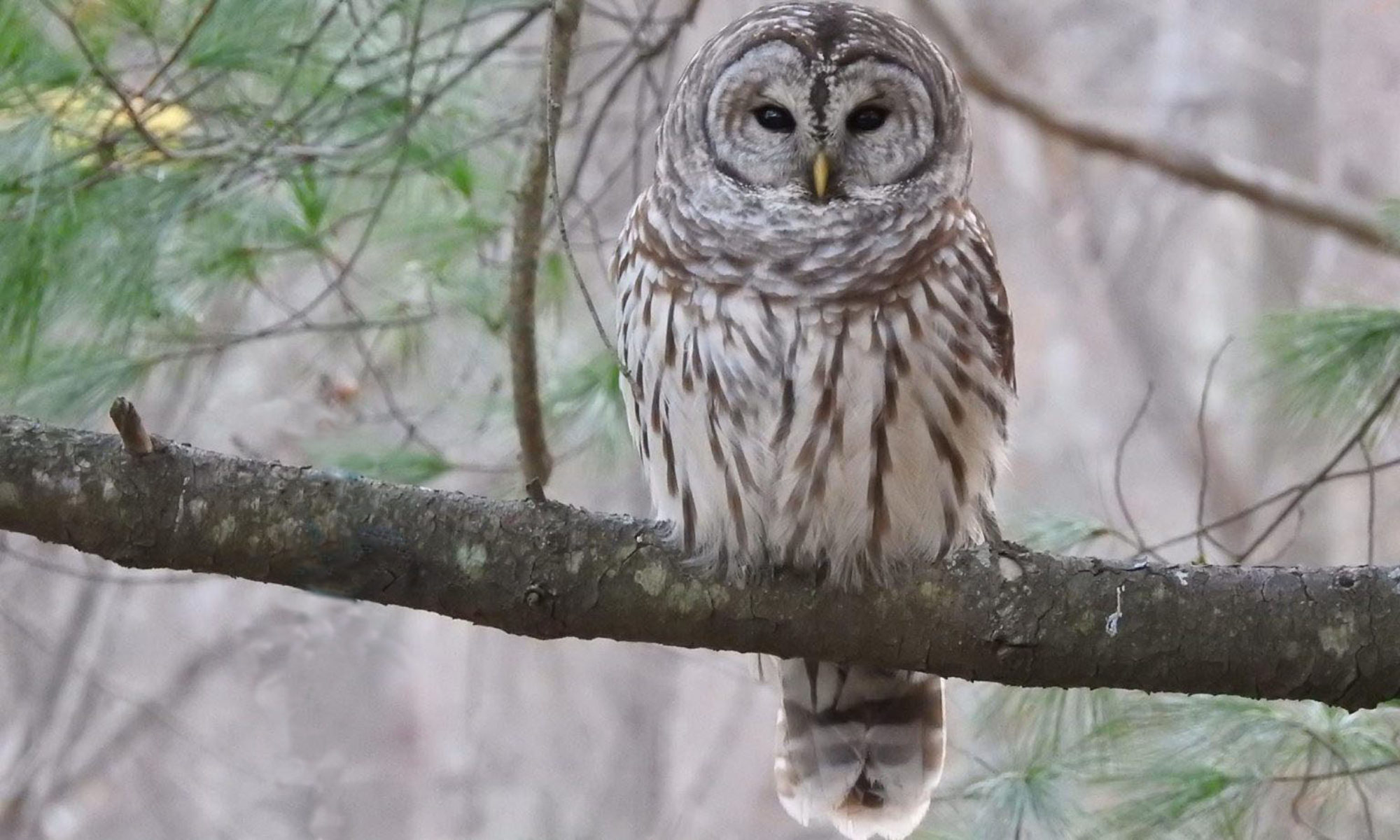I am literally drooling my way through another Great Backyard Bird Count and am actually counting the birds in my backyard, unlike the myriad birders I imagine have trekked to their favorite bird-saturated daybreak spots to secure more birds in five minutes of dawn chorus than I’ll see all day. Oh, and they’ve staked out two or three owl species calling to round out their eBird GBBC submission. You can’t make this up (or can you?): the first bird seen in the count was a New Zealand owl called a “Morepork,” and you know someone went looking for that bird. Either that or it’s fake news.
Your humble Birder with Parkinson’s gets no parade of passerines, no nighttime strigidean ululations–you’d think the minor peripheral hallucinations of my dopamine agonist ought to be twisted enough to at least conjure up a random semiconscious “Who cooks for you?” Barred Owl call when I get up to urinate at four-thirty a.m. …I’m still waiting for that, though (the owl, not the pee). I have to make do with what familiar little fluffpops I can bribe with black oil to the feeders, or the random silhouettes that I accidentally (incidentally) see while very stiffly walking the dog. In either case that’s not a high number, I assure you. For birders with PD, “crippling fallouts” have upsetting alternate connotations. Looking up into the treetops is hard, too– my back is killing me with spasms that my movement disorder specialist insists are non-Parkinsonian, even though she admits forcing binoculars into my “T. rex” posture probably hasn’t helped them. I think: “If it is already this bad, how will I ever get in shape for spring migration?”
But I digress. The GBBC is a great reason (hey, it even has “Great” in its name!) to enlist others in birding, like my seven year old who atavistically id’s sparrows faster and more accurately than you or I can (but still hasn’t conjured a Fox Sparrow this year to my Helianthus-husked suburboscape.) It’s a collective birding experience that doesn’t require a trip to Cape May or to High Island; instead, you’re downright encouraged to stay home and look out your windows, or at most to hobble over to your local park for fifteen minutes or so; crucially, you need not interact with anyone at all if you don’t feel like it.
And the GBBC is not actually spiked with intrigue: there are in reality no stakeouts; no complex strategies; no guarded itineraries; the hardcore birders don’t give a rat’s ass about this eBird/Audubon marketing stunt. But that doesn’t mean it’s not meaningful, especially if you decide to convert this from an annual one-off event into something more regular, more varied and engaging–to form it into a habit, not just an annual occurrence. The GBBC is a gateway to caring, and sustaining that care, making a plan to go birding, and following through. And possibly sharing the fun with others close to you.
Especially enthusiastic part-feral seven-year-olds.

